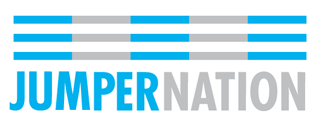As a lifelong equestrian who has tried almost every discipline at least once, I am a firm believer that experience in a variety of disciplines creates stronger and more adaptable riders. This, combined with my inability to say no when asked to try new things, has led me to become a multifaceted rider and branch out from a primarily-western foundation into hunt seat flat and fences, dressage, and reining on the IHSA circuit. When you leave the world of cowboy hats and chaps to venture into that of hairnets and breeches, there’s more to learn than just a different style of riding. Here are some things I’ve discovered in riding hunt seat and dressage during my college years:
1. People who complain about chaps being uncomfortable have never broken in a pair of tall boots. Having seen my teammates show straightfaced and focused in a new pair of tall boots, come out of the ring, and unzip them to reveal cut-off circulation and blisters, I have a whole lot of respect for the break-in process of new tall boots. My own tall boots, a pair of Tredsteps that are going on eight years old, will have to last forever, because I still remember the pain of breaking them in and would like to never do that again.
2. Hairnet snobbery is a real and justified thing. For reining, I can pull my hair back into a low ponytail in five seconds and be ready to show. Even for horsemanship, where neat buns are required, the average lunch lady hairnets that are 3 for $1 at Walmart work perfectly fine. For hunt seat, there are knotted hairnets (ouch), no-knot hairnets, hairnets that look like tube socks with wildly mixed reviews (not as traditional, but much easier with long and thick hair), thick hairnets, double hairnets, you name it. And once your hair is captured in the hairnet of choice and shoved into your helmet, you have to pull bunches of it down over your ears. What?
3. Keeping breeches clean is a nightmare. Dust on my black western horsemanship pants? No problem, just brush it off and I’m good to go. When I roll into the barn for hunt seat shows, my tan breeches are immediately stained. In light of this problem, I wear jeans over them until I have to show, but even then the second I try to groom a horse or wrap a polo wrap, there’s a mystery smudge of something on them. You just can’t win with light-colored pants.
4. Everyone looks the same. I don’t recognize my own teammates in the sea of black coats, tan breeches, white shirts, black helmets and boots. My own mother can’t find me in my flat classes, except when I am distinguishable for the aforementioned dirt on my breeches or smudged helmet.
5. I don’t know how to handle myself with short stirrups. As someone with short legs who often has to ride tall IHSA horses, western is ideal because my stirrups can be long enough for me to have leg contact with the whole barrel of a horse. With my stirrups at hunt seat length, the bottoms of my heels meet the middle of some of our giant warmbloods’ ribcages, which is likely confusing for the horse and confusing for my western leg muscles that want to stretch down and straighten my knee angle.
6. Stock ties for dressage? I competed in my very first IDA show last semester, and encountered stock ties for the first time. With wisdom and foresight, the dressage captains brought pre-tied stock ties, knowing us well enough to understand that remembering a dressage test and how to tie a stock tie was not a reasonable goal for some of us (me) at our first show. All that was required for these stock ties was to fold them over, fasten them at the back and tuck them into our coats—easy enough, right? Except that, when one of my teammates asked me to help put hers on, I forgot to fold it and fastened it on upside down, with the collar bent the wrong way. Luckily, my mistake was not noticeable, and she still won her class, but if anyone publishes a Dressage for Dummies handbook, please send it my way.
6. There’s no cheering in dressage. This came as a sad surprise when I watched my teammates nail dressage maneuvers and lay down a solid test, and had to suppress my reining whistles and cheers the whole time. Polite clapping at the end felt insufficient for the level of talent happening in the ring.
7. Tacking up has to happen in a specific order. There are so many different half pad/non-slip pad/wither pad combinations that all have to go on in a specific order on a horse whose back is a foot above your head. There’s also the inevitable moment when you’re all tacked up and get your bridle, only to notice that you forgot the martingale and now have to undo your girth to put that on.
I am grateful for the learning experiences from riding different disciplines with different coaches, but at the end of the day it’s a huge relief to put my jeans and boots back on and settle into a western saddle.
Fellow combined riders, what difficulties have you encountered in riding multiple disciplines?
Haley Ruffner is attending Alfred University, majoring in English with a minor in Equine Business Management. She owns two Quarter Horse geldings, Cricket (“At Last an Invitation”) and Slide (“HH Slick N Slide”). Haley is a captain of the AU western equestrian team, competing in horsemanship, reining and hunt seat. She also loves trail riding.

